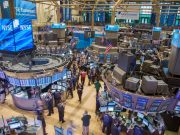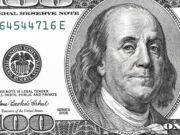In 1999, during the height of the dot-com bubble, I watched as Wall Street firms poured billions into companies with no earnings, no revenue, and often no real business model whatsoever.
Meanwhile, there was a small group of companies that nobody wanted to touch. Boring, profitable businesses with actual cash flow. Real earnings. Genuine competitive advantages.
Twenty-five years later, those dot-com darlings are either bankrupt or trading for pennies on the dollar. But those “boring” stocks? They’ve compounded at rates that would make Warren Buffett jealous.
Today, I’m going to show you the exact formula that our research shows turned $10,000 into $178,300 over the past 25 years – while the S&P 500 turned that same $10,000 into just $53,700.
That’s a difference of $124,600 in pure profit. And the best part? This formula takes less than five minutes to apply.
Editor’s Note: This is urgent. One of the biggest stock market events in 25 years is rapidly unfolding… The economist who predicted the 2008 Financial Crisis says it will be: “The Biggest Crash of Our Lifetime.” Cutting the entire tech market by HALF – virtually overnight. This is why the world’s financial elite are panic-selling stocks at the fastest rate in a decade. [Full Story…]
The $2.7 Trillion Discovery Hidden in Plain Sight
Here’s what the institutional money managers don’t want you to know…
According to data from Morningstar, 88% of large-cap fund managers failed to beat the S&P 500 over the past 15 years. That’s nearly nine out of ten “professionals” who couldn’t match a simple index fund.
But what if I told you there’s a screening method so powerful, so consistent, that it’s tripled the market’s returns for over two decades?
This isn’t some black-box algorithm or complex trading system. It’s based on five simple metrics that any investor can calculate in minutes using free online tools.
The Five Numbers That Changed Everything
Here’s the exact criteria that defines this powerful screening method, which filters through over 3,000 publicly traded stocks:
1. Return on Assets (ROA) of at least 15% over five years
This tells us the company generates $0.15 in profit for every dollar of assets. The average S&P 500 company? Just 6.7%.
2. Return on Equity (ROE) of at least 20% over five years
Warren Buffett calls ROE “the most important metric in investing.” Our threshold is nearly double the market average of 12%.
3. Free Cash Flow Margins of at least 10% over five years
Cash is king. Companies that convert 10%+ of revenue into free cash flow have pricing power that competitors can only dream about.
4. Sales Growth of at least 5% annually over five years
Steady growth compounds wealth. We’re not chasing moonshots – just consistent execution.
5. P/E Ratio of 25 or below
Discipline on price. Even the best business becomes a terrible investment at the wrong valuation.
6. Market Capitalization of at least $300 million
We avoid the penny stock graveyard. Real businesses only.
Related: Wanted! 300 People to Partner with Elon Musk on Project Colossus
The Proof Is in the Numbers
Our research team backtested this screen over the past 25 years. The simulation involved buying an equal dollar amount of every stock that met these criteria, rebalancing quarterly.
The results?
- 3X Screen Portfolio: +1,783% total return
- S&P 500: +537% total return
- Outperformance: 3.3X
Let me put that in perspective…
If someone had invested $100,000 using this method in 1999, they’d have $1,883,000 today. The same investment in an S&P 500 index fund? Just $637,000.
That’s an extra $1,246,000 in your pocket.
37 Companies Making the Cut Right Now
As of Thursday’s close, exactly 37 companies pass all six criteria. These aren’t speculative tech stocks or risky biotech gambles. They’re cash-generating machines with fortress balance sheets.
Companies like:
- Meta Platforms (META): 29% ROE, 24% FCF margins, trading at just 23x earnings
- Apple (AAPL): 156% ROE, 24% FCF margins, the world’s most profitable company
- Mastercard (MA): 164% ROE, 44% FCF margins, a toll booth on global commerce
- Booking Holdings (BKNG): 90% ROE, 29% FCF margins, dominating online travel
But here’s what’s really interesting…
Hidden among these blue chips are several smaller companies – under $5 billion market caps – that are absolutely crushing it on profitability metrics.
The $483 Million Cash Flow King Nobody’s Watching
One company on our list particularly stands out. It’s a “picks and shovels” play in a rapidly expanding digital marketplace. Since its 2021 IPO, it has:
- Compounded revenue at 30%+ annually
- Maintained 90% gross margins (higher than Apple!)
- Generated 25% returns on invested capital
- Sustained EBITDA margins in the mid-30% range
Yet despite these fortress-like fundamentals, Wall Street completely ignores it. The stock trades at just 11 times earnings – less than half the S&P 500’s multiple of 24.
With a market cap below $500 million, it’s too small for most institutional investors. But that’s precisely the opportunity. When the big money eventually discovers this cash machine, the revaluation could be explosive.
Why This Works (And Always Will)
You might wonder: If this screen is so effective, why doesn’t everyone use it?
Three reasons:
First, it’s boring. The financial media needs drama to sell subscriptions. “Company Generates Consistent 20% Returns on Equity” doesn’t grab headlines like “This Penny Stock Could Explode 10,000%!”
Second, it requires patience. This screen might only change 10-15% of its holdings per quarter. Most investors can’t sit still that long.
Third, it goes against human nature. When markets are soaring, these quality companies often lag the speculative garbage. It takes discipline to stick with the strategy when your neighbor is bragging about his meme stock gains.
But that’s exactly why it works.
Market history shows that the biggest fortunes aren’t made on lottery tickets. They’re built by compounding capital at high rates over long periods.
The Clock Is Ticking
Right now, markets are witnessing one of the greatest dispersions between quality and speculation seen in 25 years.
The “Magnificent Seven” tech stocks account for 35% of the S&P 500’s market cap. Meanwhile, hundreds of highly profitable companies trade at single-digit P/E ratios.
History shows these extremes don’t last. When the pendulum swings – and it always does – the companies with real earnings, real cash flow, and real competitive moats will be the last ones standing.
The question is: Will you be positioned to profit when it happens?
Your Next Move
Editor’s Note: The America you knew is dying in front of you… Here’s your financial lifeline [Full Story…]
The formula has been revealed. The backtested results speak for themselves. Now it’s up to each investor to act.
You can continue trusting Wall Street’s overpaid fund managers who can’t even beat a passive index. Or you can take control of your financial future with a proven system that’s delivered 3.3X market returns for 25 years running.
The choice is yours.
But remember this: Every day you wait is another day of compounding you’ll never get back. And in a market where quality companies trade at bargain prices while speculation runs wild, opportunities like this don’t last forever.
Stay vigilant,
Tom Anderson
Editor, Wall Street Watchdogs
P.S. That $483 million cash flow king highlighted above? It just reported another blowout quarter with 35% revenue growth and expanding margins. Yet the stock barely budged. When Wall Street finally wakes up to this opportunity, early investors could see gains of 200% or more. But by then, it’ll be too late for most people. Don’t be one of them.
Wall Street Watchdogs is committed to uncovering the truth about financial markets and helping individual investors prepare for systemic risks that mainstream media won’t discuss. We receive no compensation from the companies or assets we analyze. This article is for educational purposes only and should not be construed as investment advice.











